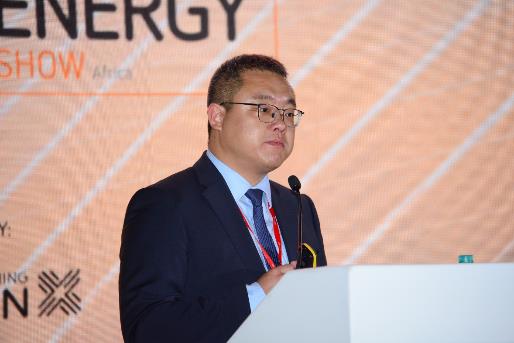Five years ago, launching a decent streaming platform took millions. Now? A teenager with a laptop can build something that reaches millions. That shift…
Solar, storage exhibition points to green energy as Africa’s power answer

Build a new power system and green solution for the future of Africa.
This was the message put forward by Huawei’s Director of Huawei Digital Power of Sub-Saharan Africa, David Bian who said there was a needed shift to green and renewable energy.

During the Solar and Storage Live exhibition in Johannesburg, Bian outlined how renewable energy was important in the long-term plan for any country.
“Today, we still live in an era of carbon-based energy.”
“In the short term, we will face the consequences of carbon emissions. And in the long term, we will face the risk of carbon resources exhaustion. The energy transition is therefore vital to the long-term development of human civilization.”
He identified how Huawei Digital Power had a four key pathway plan to achieve energy transition: Decarbonisation, electrification, digitalization, and intelligence.
“When decarbonizing the energy sector, renewable energy will be critical. More particularly, the world will need to significantly ramp up renewable installation and generation,” he said.
“Last year, renewable energy accounted for about 28% of global electricity generation, To achieve carbon neutrality, the proportion will have to reach 91% by 2050.”
Solar photovoltaic energy may be the answer according to Bian, who highlighted how the total global installed solar PV capacity had increased by 24GW in 2023 and is expected to keep growing.
There is a rise in renewables and this will enable the electrification of traditionally carbon-intensive industries such as agriculture, transport, and mining. This will aid in bringing down their carbon footprints.
Tractors and trucks running on renewable produced electricity and petrol or diesel-powered generators can be replaced with clean alternatives. That will have a positive environmental impact.
“Electrification on the energy consumption side means that electricity will be the main energy consumed in the future,” Bian continued.
“To achieve carbon neutrality, this type of electricity consumption needs to rise from 22% to 50% by 2030.”
The growth of electric vehicles illustrates how rapid this transition will be.
The National Renewable Energy Agency estimated that the number of electric vehicles worldwide will grow from 30 million at the end of last year to more than 2.18 billion by 2050,” he said.
He added how ChatGPT had triggered a revolution in computing power. The demand for intelligent computing is increasing and will likely increase at a rapid rate.
This means AI computing power is set to increase 500 times by 2030.
Huawei’s intelligent PV + ESS generator technology is based on the intelligent string controller and intelligent string energy storage.
It uses grid-forming technology to safely connect to the grid under a high proportion of renewable energy.
The technology was verified in the world’s first GW-level optical storage grid project, the 1.3GWh microgrid project of Neom New Town, which supported Saudi Arabia in building the world’s first 100% renewable-powered city.
These latest improvements can have a profound effect on Africa particularly as the digital and energy worlds become more deeply integrated.
Also read: Podcasting presents the right recipe needed by brands

